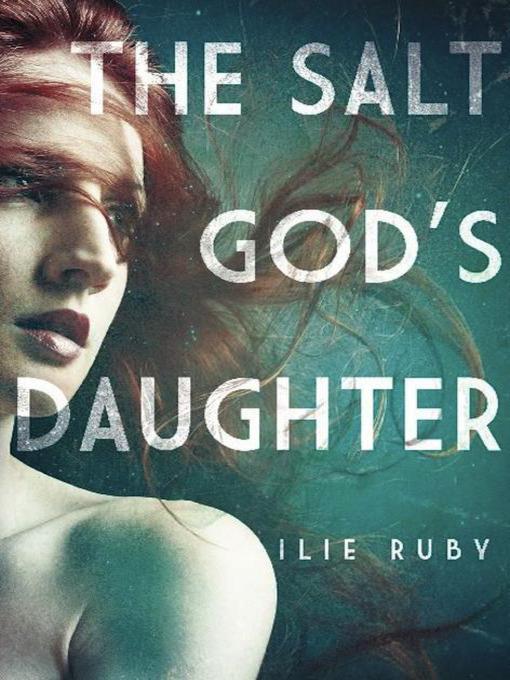
The Salt God's Daughter
کتاب های مرتبط
- اطلاعات
- نقد و بررسی
- دیدگاه کاربران
نقد و بررسی

July 9, 2012
Ruby’s second novel (after The Language of Trees) imbues the complex relationships between mothers and daughters with legends and feminist mysticism to create a confusing family history dotted with magical realism. Ruthie and Dolly’s mother, Diana, is dramatic and unreliable, part Pied Piper, part con artist. The family drifts (both girls’ fathers are absent and unexplained), but Diana finds herself drawn to Long Beach, Calif., where she’s a housekeeper at a motel and watches the omnipresent sea lions. There, the girls find a settled life until alcoholism and depression hasten their mother’s death and they move into the care of nuns at a home for teenage girls. The nuns are both overwhelmed by the worldly life of their charges and caring stewards of womanhood. As a young woman, with one brief marriage already behind her, Ruthie moves back to work at the motel, now a nursing home, where she falls in love with a mysterious fisherman she calls “the Salt God.” Family secrets and otherworldly powers slowly unfold until all is explained. Though Ruby’s writing is elegant and insightful, particularly in revealing the ways in which the mother-daughter bond can end in disappointment, the long time line and haphazard mythologies muddle the tale. Agent: Sally Wofford-Girand, Brick House.

August 1, 2012
In her second novel (after The Language of Trees), Ruby traces three generations of women in a single family. Diana, a charming but unreliable, hard-drinking single mother, gives daughters Dolly and Ruth a rootless existence. As an adult escaping an abusive marriage, Ruth returns to work at a former motel in Long Beach, CA, now a nursing home, where she had spent the happiest and most stable years of her childhood. There she falls in love with Graham, a Scottish fisherman who appears only at the full moon and who disappears entirely after the birth of their daughter, Naida, an unusual child with the gift of prophecy. Naida (a variant of Naiad, or "water nymph") is as strangely drawn to the sea as her grandmother Diana (Roman goddess of the moon) had been by the moon. Throughout, Ruby stresses the importance of legends, myths, symbols, and the stories we tell ourselves, as well as the emotional strength and courage of her troubled female characters and the enduring bonds between them. VERDICT Despite its derivative title (it seems as if every other novel these days is about someone's daughter or wife) this is a lyrical, multigenerational coming-of-age tale that will appeal to fans of magical realism.--Lauren Gilbert, Sachem P.L., Holbrook, NY
Copyright 2012 Library Journal, LLC Used with permission.

September 15, 2012
When a blue moon rises, mistakes can be undone, lost children can find their homes, and sea lions can shed their skins. The selkie myth lies at the heart of Ruby's (The Language of Trees, 2010) second novel. Born with a webbed foot, young Naida yearns for her mysterious father. But to understand his role in her life, she must first understand the stories of the women who came before her. The story swirls back to begin with her mother's tale. Ruthie and her sister, Dolly, grow up on the road with their mother, Diana, sleeping in their car, cursing in Yiddish, eluding mud slides and even picking strawberries as day workers. Ritually consulting her Farmer's Almanac, like Bottom in Shakespeare's A Midsummer Night's Dream, Diana moves her small family on. Is Diana simply restless, or is she fleeing something or someone? Eventually, Diana finagles her way into a real job at the beachside Twin Palms hotel. Her daughters embrace not only school, but also the wildness of the sea and town life. After Diana's death, the girls strangely find themselves under the guardianship of three kind nuns. On the cusp of womanhood, however, Ruthie is attacked, and as she grieves, she weeps seven tears into the sea. Just as the moon cycles, so do women's lives, and Ruthie returns to Twin Palms, which has become the Wild Acres retirement home, where she cares for others. Under a blue moon, Ruthie meets Graham, a Scottish fisherman whose soul calls to hers. Graham's love for Ruthie is intense, yet his presence ebbs and flows like the tide. What gifts has he bestowed on his daughter, Naida? This is a bewitching tale of lives entangled in lushly layered fables of the moon and sea.
COPYRIGHT(2012) Kirkus Reviews, ALL RIGHTS RESERVED.

September 1, 2012
Award-winning Ruby (The Language of Trees, 2010) takes readers to early 1970s California, where young Ruthie and her older sister, Dolly, are experiencing an unconventional childhood. Their often transient mother, the tragically poetic Diana, raises her daughters on the road, relying on the Farmer's Almanac to guide them to each destination. When Diana unexpectedly dies, Ruthie and Dolly are sent to a residential home, where the two teenagers rebel against its restrictions. Though Dolly is headstrong and determined, Ruthie struggles with abandonment, violation, and loneliness. Nearing adulthood, Ruthie returns to a place from her past, an old motel turned into a retirement community, where her relationships with the elderly residents offer the solace she so desires. Here Ruthie falls in love with elusive, mysterious fisherman Graham. But when their daughter, Naida, is born, Graham disappears. As Naida grows up, she yearns for the father she never knew, while her mystical connection to the ocean leads to new secrets. Lushly woven with elements of folklore, Ruby's novel is a captivating inquiry into the generational, wayward bonds of mothers and daughters.(Reprinted with permission of Booklist, copyright 2012, American Library Association.)

























دیدگاه کاربران